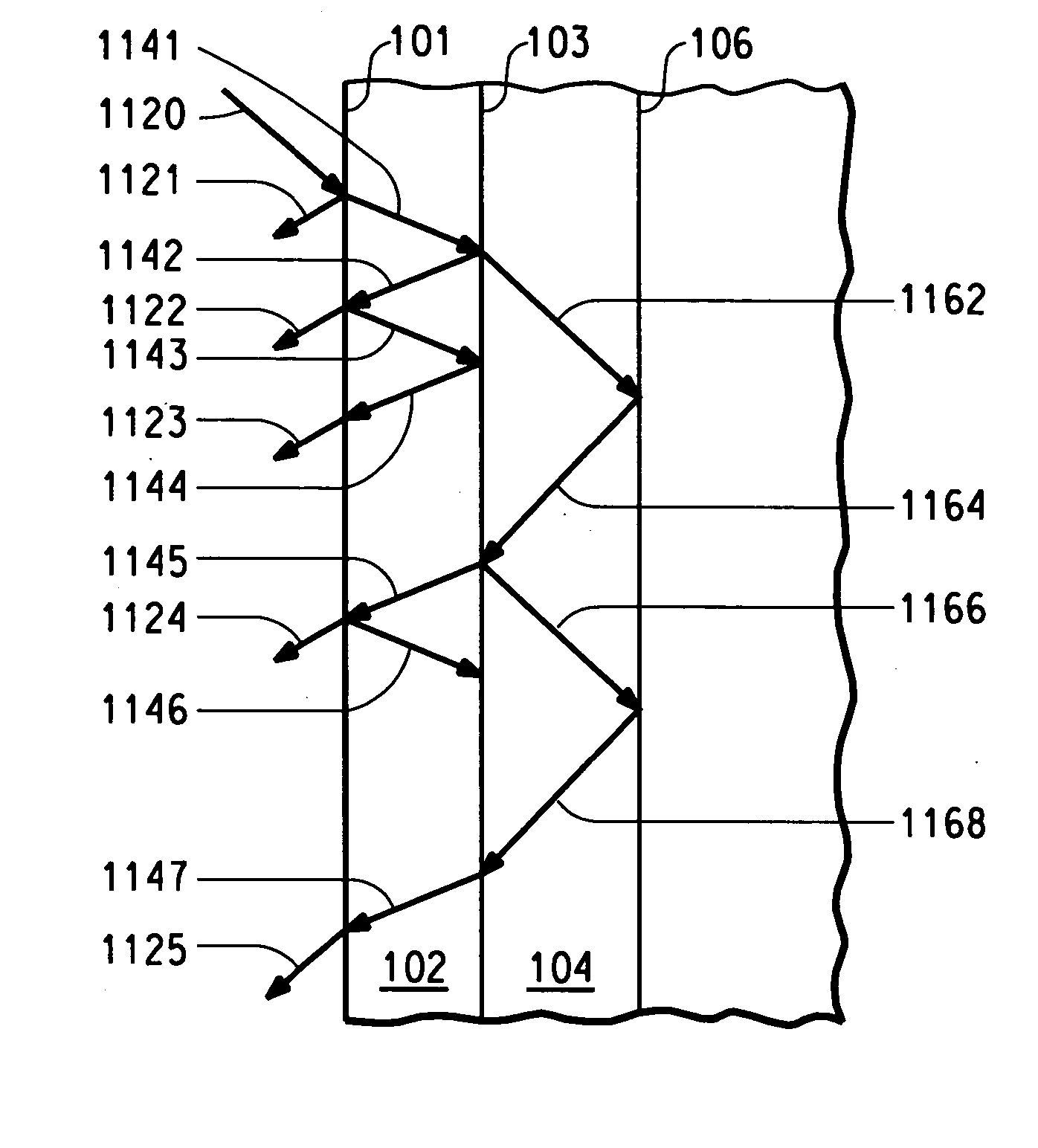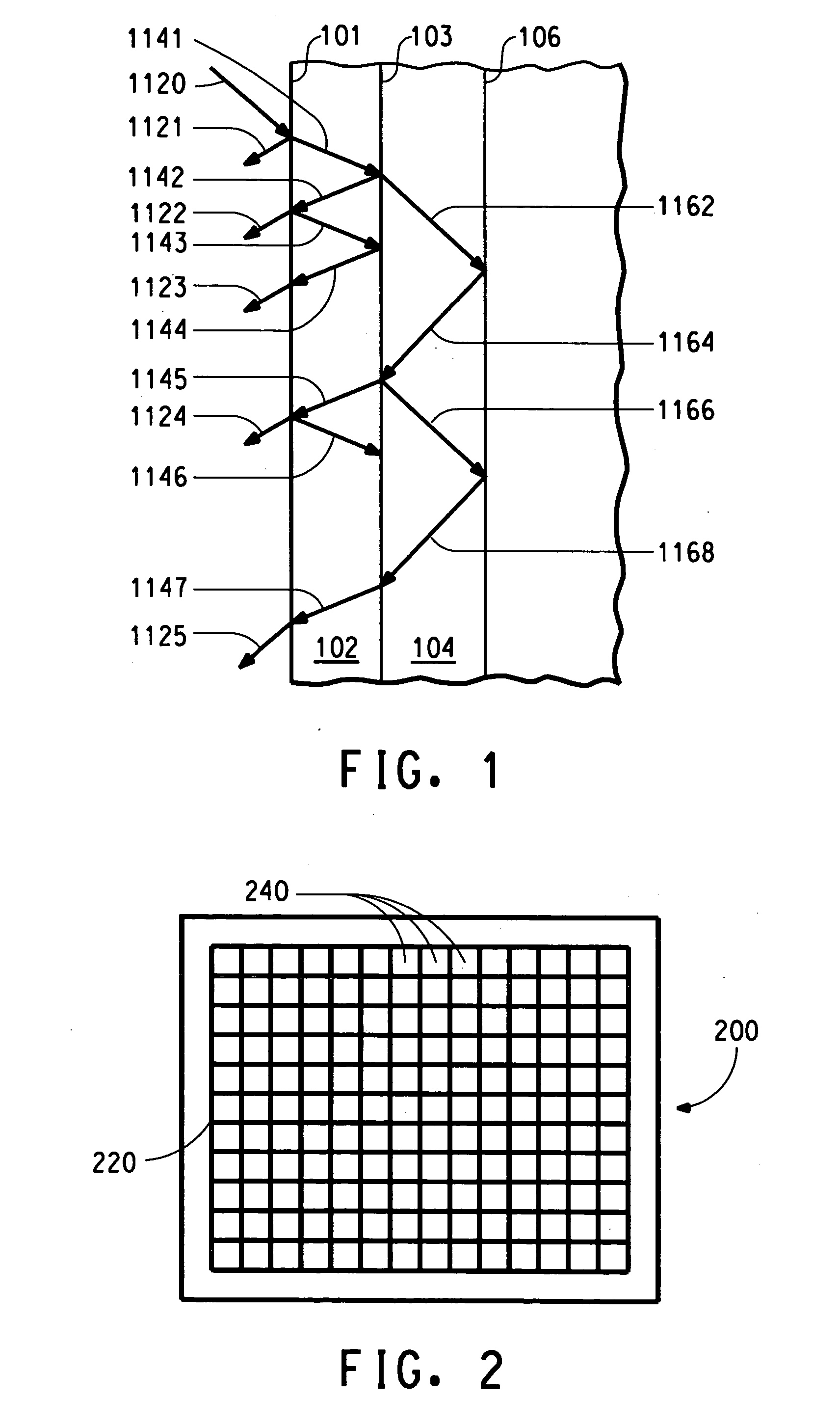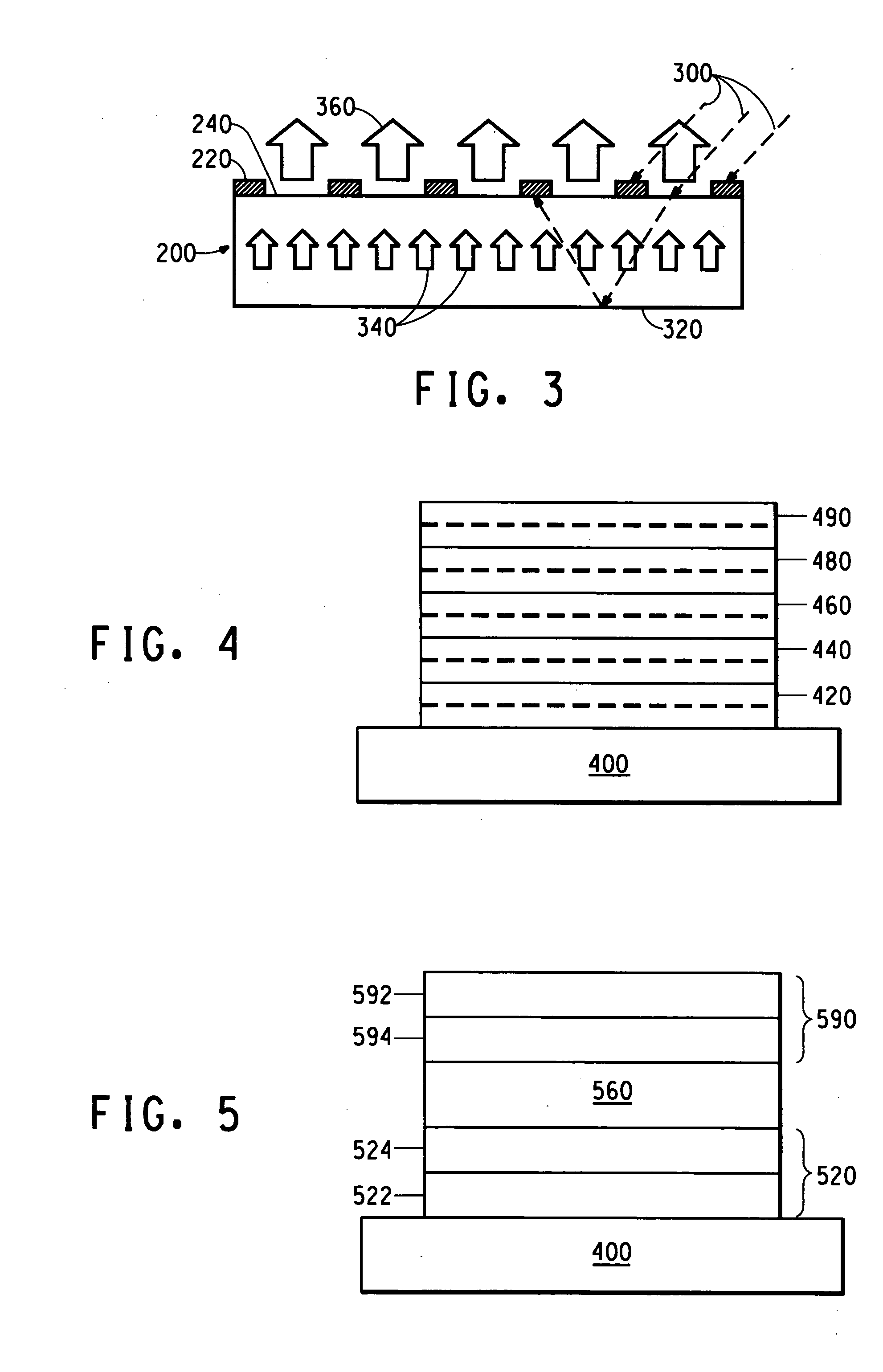Array comprising organic electronic devices with a black lattice and process for forming the same
a technology of organic electronic devices and black lattices, which is applied in the direction of discharge tubes/lamp details, discharge tubes luminescnet screens, electric discharge lamps, etc., can solve the problems of increasing the thickness of the module, increasing the cost, and not without problems
- Summary
- Abstract
- Description
- Claims
- Application Information
AI Technical Summary
Problems solved by technology
Method used
Image
Examples
example 1
[0113] Example 1 illustrates that a black lattice using a high absorbance material can both increase the contrast and reduce both the radiating and electrical cross talk among electronic devices. In this example, a black lattice is used to reduce L.sub.background and improve CR (Equation 1) by a factor of about two.
[0114] A typical polymer LED is fabricated following well-known procedures. Glass / ITO can be used as substrate and transparent anode. A thin layer of PANI or PEDOT is spin-cast on the substrate, followed by spin-casting an electroluminescent (EL) layer. A thin layer of metal Ba / Al is vacuum deposited on top of EL layer and serves as the cathode. The color of the PLED device depends on the opto-electronic properties of the EL material. The black lattice is fabricated on another glass substrate using photolithography technology. The black lattice could also be fabricated on the device glass substrate. The black lattice is Cr metal which is thick enough to absorb substantial...
example 2
[0115] Example 2 illustrates that a black lattice can be formed on a substrate using a pattern that at least partially surrounds anodes or cathodes. The black lattice fabricated in this way can: 1) enhance the contrast; and 2) eliminate both optical and electronic cross talk between pixels.
[0116] Glass can be used as a substrate. ITO and black photoresist are used as the anode contact and black lattice and are prepared by photolithography in sequence. The ITO is patterned using positive photoresist, and then etching of the ITO. The black lattice is patterned using negative black photoresist. In this example, the black lattice is made as thick as the ITO layer. The lateral dimensions of the black strips are the same as those in Example 1. In fabricating a light emitting device, a thin, transparent PANI or PEDOT layer is spin-cast on the substrate with thickness varied in a range of approximately 30 nm-500 nm. Three different PPV derivatives with EL emission covering the visible range...
example 3
[0118] Example 3 illustrates that OLEDs with black anodes can be fabricated following a similar procedure described in Example 2. This example demonstrates that high display contrast can be obtained with polarizer-less, multicolor organic display with a black anode.
[0119] Glass / Cr / ITO, glass / Ta / ITO, or glass / Si can be used as the substrate and anode, and the anode layers (Cr, Ta, Si, ITO) are prepared by thermal evaporation, MOCVD and PECVD. The reflectivity or transmittance of the anode can be adjusted by the thickness of Cr, Ta, and Si with a light transmission over .about.10%. A thin, transparent PANI layer can be spin-cast with thickness varied in range of 30-500 nm. Three PPV derivatives with EL emission covering the visible ranges is used as the EL layer in three different devices. Their thicknesses are approximately 70 nm. Ba(3 nm) / Al(300 nm) can be used as the cathode layer. A contrast ratio of approximately 100:1 may be obtained for all three different color devices.
PUM
 Login to View More
Login to View More Abstract
Description
Claims
Application Information
 Login to View More
Login to View More - R&D
- Intellectual Property
- Life Sciences
- Materials
- Tech Scout
- Unparalleled Data Quality
- Higher Quality Content
- 60% Fewer Hallucinations
Browse by: Latest US Patents, China's latest patents, Technical Efficacy Thesaurus, Application Domain, Technology Topic, Popular Technical Reports.
© 2025 PatSnap. All rights reserved.Legal|Privacy policy|Modern Slavery Act Transparency Statement|Sitemap|About US| Contact US: help@patsnap.com



